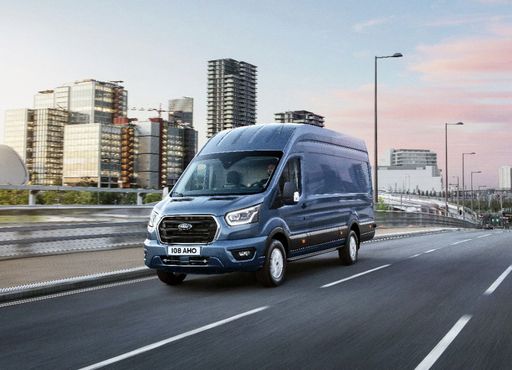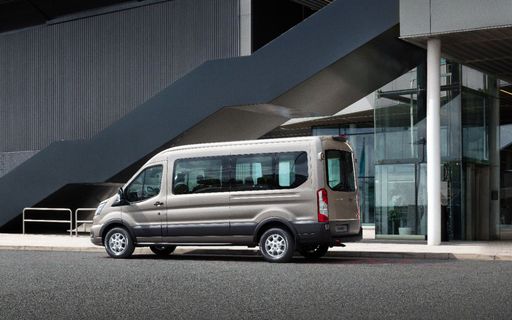Ford Transit Transporter vs Kia PV5 - Differences and prices compared
Costs and Efficiency:
Price and efficiency are key factors when choosing a car – and this is often where the real differences emerge.
Kia PV5 has a noticeable advantage in terms of price – it starts at 32800 £, while the Ford Transit Transporter costs 39900 £. That’s a price difference of around 7113 £.
In terms of energy consumption, the advantage goes to the Kia PV5: with 19.80 kWh per 100 km, it’s hardly perceptible more efficient than the Ford Transit Transporter with 21.30 kWh. That’s a difference of about 1.50 kWh.
As for range, the Kia PV5 performs evident better – achieving up to 400 km, about 83 km more than the Ford Transit Transporter.
Engine and Performance:
Power, torque and acceleration are the classic benchmarks for car enthusiasts – and here, some clear differences start to show.
When it comes to engine power, the Ford Transit Transporter has a evident edge – offering 269 HP compared to 163 HP. That’s roughly 106 HP more horsepower.
In terms of top speed, the Kia PV5 performs to a small extent better – reaching 135 km/h, while the Ford Transit Transporter tops out at 120 km/h. The difference is around 15 km/h.
There’s also a difference in torque: Ford Transit Transporter pulls clearly stronger with 430 Nm compared to 250 Nm. That’s about 180 Nm difference.
Space and Everyday Use:
Cabin size, boot volume and payload all play a role in everyday practicality. Here, comfort and flexibility make the difference.
Seats: Ford Transit Transporter offers a bit more seating capacity – 6 vs 5.
In curb weight, Kia PV5 is to a small extent lighter – 1860 kg compared to 2074 kg. The difference is around 214 kg.
In maximum load capacity, the Ford Transit Transporter performs convincingly better – up to 14100 L, which is about 9680 L more than the Kia PV5.
When it comes to payload, Ford Transit Transporter clearly takes the win – 2607 kg compared to 790 kg. That’s a difference of about 1817 kg.
Who comes out on top?
Overall, the Ford Transit Transporter shows itself to be dominates this comparison and secures the title of DriveDuel Champion.
It convinces with the more balanced overall package and proves to be the more versatile choice for everyday use.
 @ Ford Motor Company / Ford Media Center
@ Ford Motor Company / Ford Media Center
Ford Transit Transporter
Costs and Consumption
View detailed analysis
Engine and Performance
View detailed analysis
Dimensions and Body
View detailed analysis
Ford Transit Transporter
The Ford Transit is the no-nonsense workhorse that turns heavy-duty hauling into a surprisingly civilized experience, with a cabin that favors practicality over pretense. It’s the go-to for tradespeople and fleet managers who want reliability, adaptability and low running headaches — not showy gimmicks.
details @ Ford Motor Company / Ford Media Center
@ Ford Motor Company / Ford Media Center
 @ Ford Motor Company / Ford Media Center
@ Ford Motor Company / Ford Media Center
 @ Ford Motor Company / Ford Media Center
@ Ford Motor Company / Ford Media Center
Kia PV5
The Kia EV5 is an exciting new entrant in the landscape of electric SUVs, promising a blend of style and innovation that captures attention. It boasts a sleek and modern design that aligns with Kia's evolving aesthetic identity, blending practicality with eye-catching details. With its foray into the electric vehicle segment, the EV5 is set to offer a highly competitive option for those looking to embrace sustainable mobility without compromising on comfort or tech features.
details
 @ Ford Motor Company / Ford Media Center
@ Ford Motor Company / Ford Media Center
|
|
|
|
|
Costs and Consumption |
|
|---|---|
|
Price
39900 - 69100 £
|
Price
32800 - 38900 £
|
|
Consumption L/100km
7.9 - 10.3 L
|
Consumption L/100km
-
|
|
Consumption kWh/100km
21.3 - 32 kWh
|
Consumption kWh/100km
19.8 - 20.3 kWh
|
|
Electric Range
247 - 317 km
|
Electric Range
288 - 400 km
|
|
Battery Capacity
68 kWh
|
Battery Capacity
51.5 - 71.2 kWh
|
|
co2
0 - 270 g/km
|
co2
0 g/km
|
|
Fuel tank capacity
70 L
|
Fuel tank capacity
-
|
Dimensions and Body |
|
|---|---|
|
Body Type
Cargo Van
|
Body Type
Cargo Van, Bus
|
|
Seats
3 - 6
|
Seats
2 - 5
|
|
Doors
4
|
Doors
4 - 5
|
|
Curb weight
2074 - 2765 kg
|
Curb weight
1860 - 2145 kg
|
|
Trunk capacity
-
|
Trunk capacity
1320 L
|
|
Length
5531 - 6704 mm
|
Length
4695 mm
|
|
Width
2059 mm
|
Width
1850 - 1895 mm
|
|
Height
2530 - 2778 mm
|
Height
1923 mm
|
|
Max trunk capacity
9300 - 14100 L
|
Max trunk capacity
2300 - 4420 L
|
|
Payload
735 - 2607 kg
|
Payload
505 - 790 kg
|
Engine and Performance |
|
|---|---|
|
Engine Type
Diesel, Electric
|
Engine Type
Electric
|
|
Transmission
Manuel, Automatic
|
Transmission
Automatic
|
|
Transmission Detail
Manual Gearbox, Automatic Gearbox, Reduction Gearbox
|
Transmission Detail
Reduction Gearbox
|
|
Drive Type
Front-Wheel Drive, Rear-Wheel Drive, All-Wheel Drive
|
Drive Type
Front-Wheel Drive
|
|
Power HP
105 - 269 HP
|
Power HP
121 - 163 HP
|
|
Acceleration 0-100km/h
-
|
Acceleration 0-100km/h
10.7 - 16.3 s
|
|
Max Speed
120 km/h
|
Max Speed
135 km/h
|
|
Torque
310 - 430 Nm
|
Torque
250 Nm
|
|
Number of Cylinders
4
|
Number of Cylinders
-
|
|
Power kW
77 - 198 kW
|
Power kW
89 - 120 kW
|
|
Engine capacity
1996 cm3
|
Engine capacity
-
|
General |
|
|---|---|
|
Model Year
2019 - 2024
|
Model Year
2025
|
|
CO2 Efficiency Class
G, A
|
CO2 Efficiency Class
A
|
|
Brand
Ford
|
Brand
Kia
|
What drivetrain options does the Ford Transit Transporter have?
Available configurations include Front-Wheel Drive, Rear-Wheel Drive or All-Wheel Drive.
The prices and data displayed are estimates based on German list prices and may vary by country. This information is not legally binding.
